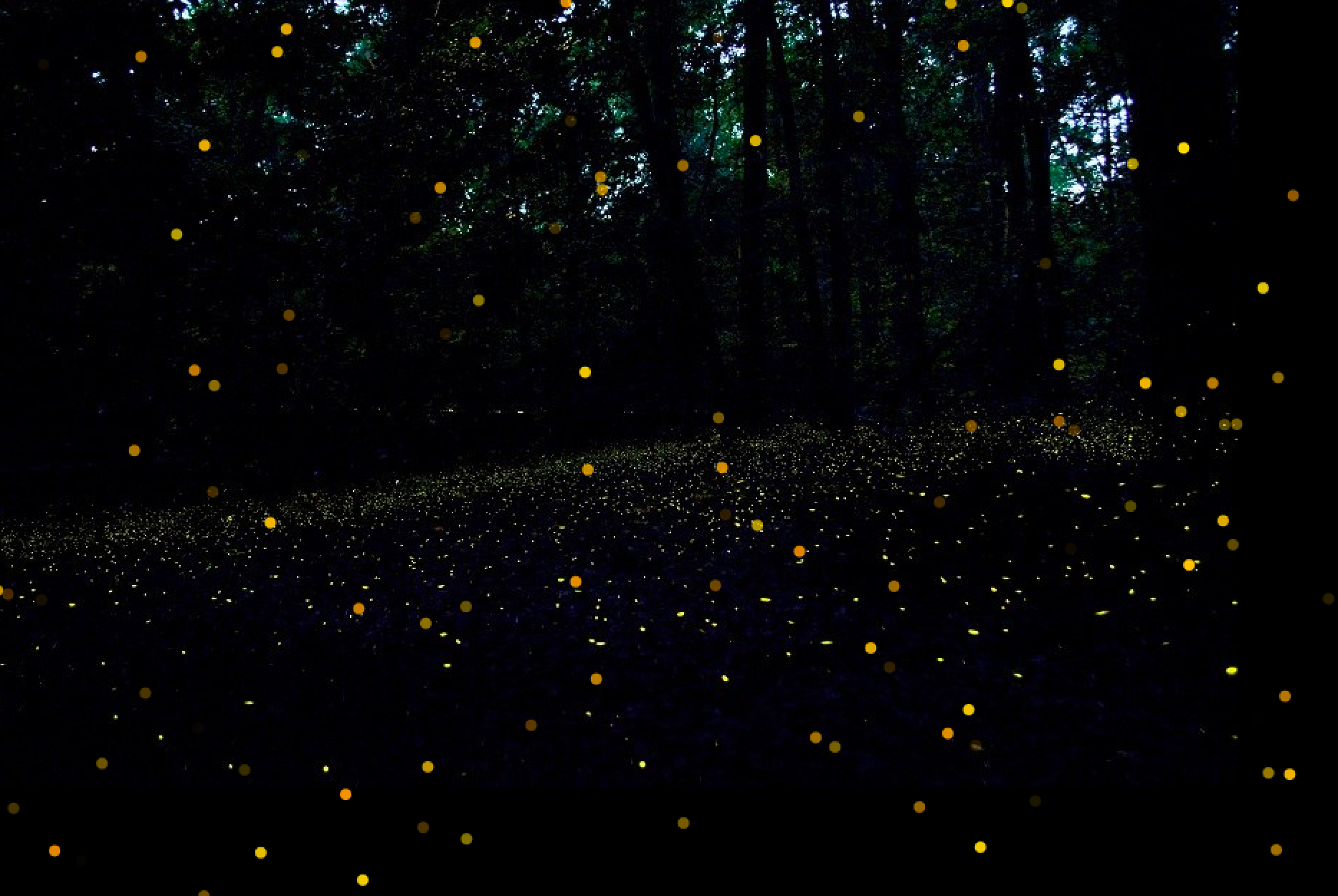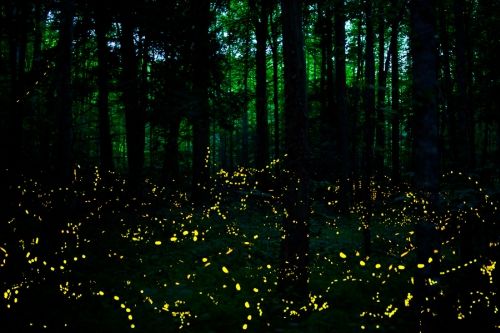Oscillating Fireflies
An Educational Tool for Synchronization

This project serves as an educational tool that models the fascinating self organizing and collective behavior of fireflies, namely the natural phenomenon of firefly synchronization. It recognizes and visualizes the flashing of these oscillators as pulsatic and episodic, fireflies that start out flashing randomly and only gradually synchronize with each other throughout the night. In other words, when a firefly is aware of the flash of another, it either slows or speeds up its flashes in order to become more in phase with the other during the next cycle. Fireflies become entrained by each other, meaning that fireflies have the ability to match its frequency to that of another firefly, thus synchronizing.
This project also analyzes the study based on Bard Ermentrout and John Rinzel’s model (1984) of introducing an artificial stimuli in order to analyze the firefly’s flashing rhythm. The flashlight essentially interrupts the firefly’s natural behavior of going through a flashing cycle by introducing a periodic stimulus. Similarly, when the firefly is behind the stimulus' cycle, the firefly will speed up in an attempt to synchronize, and when behind, it will slow down.

